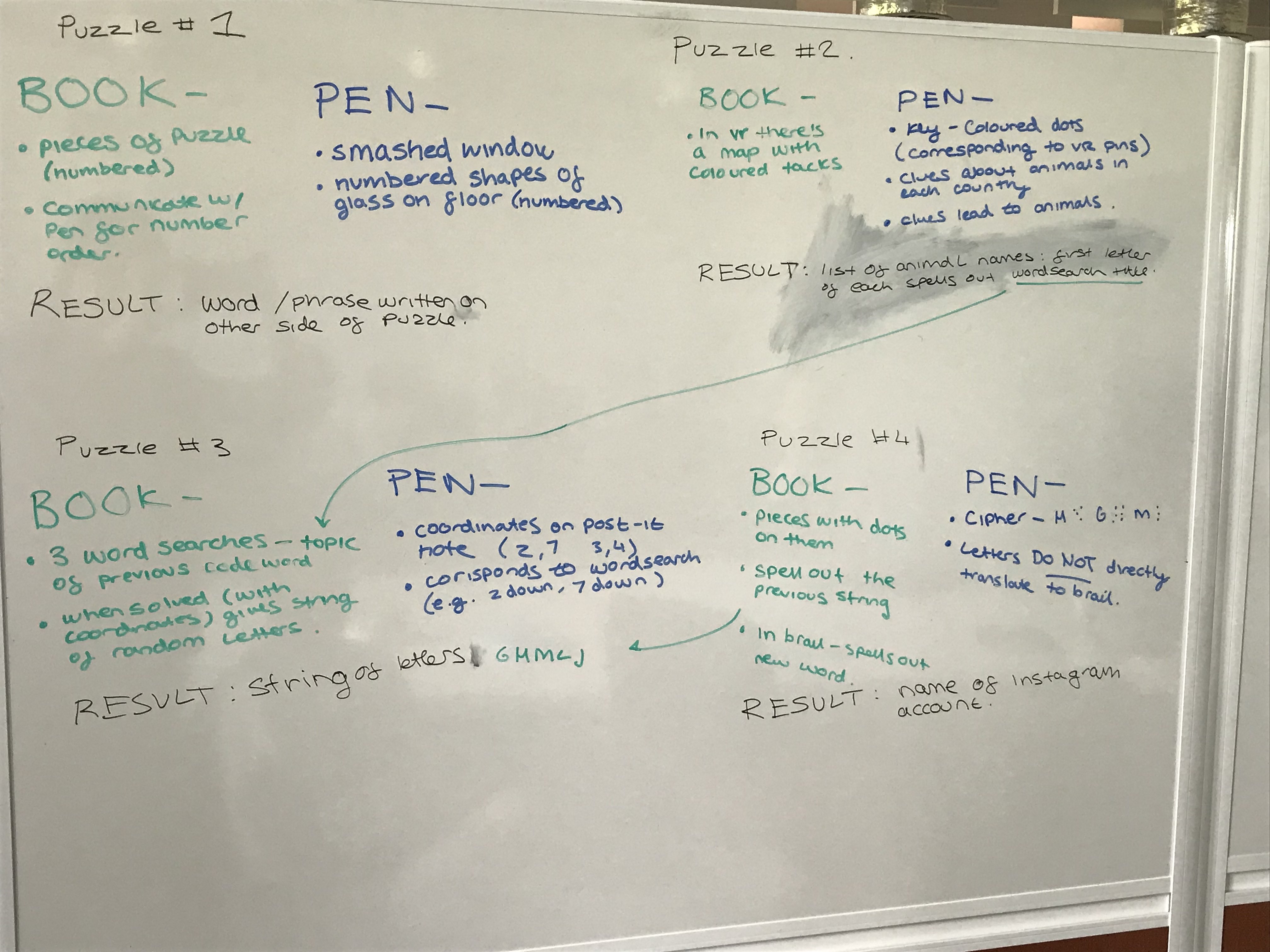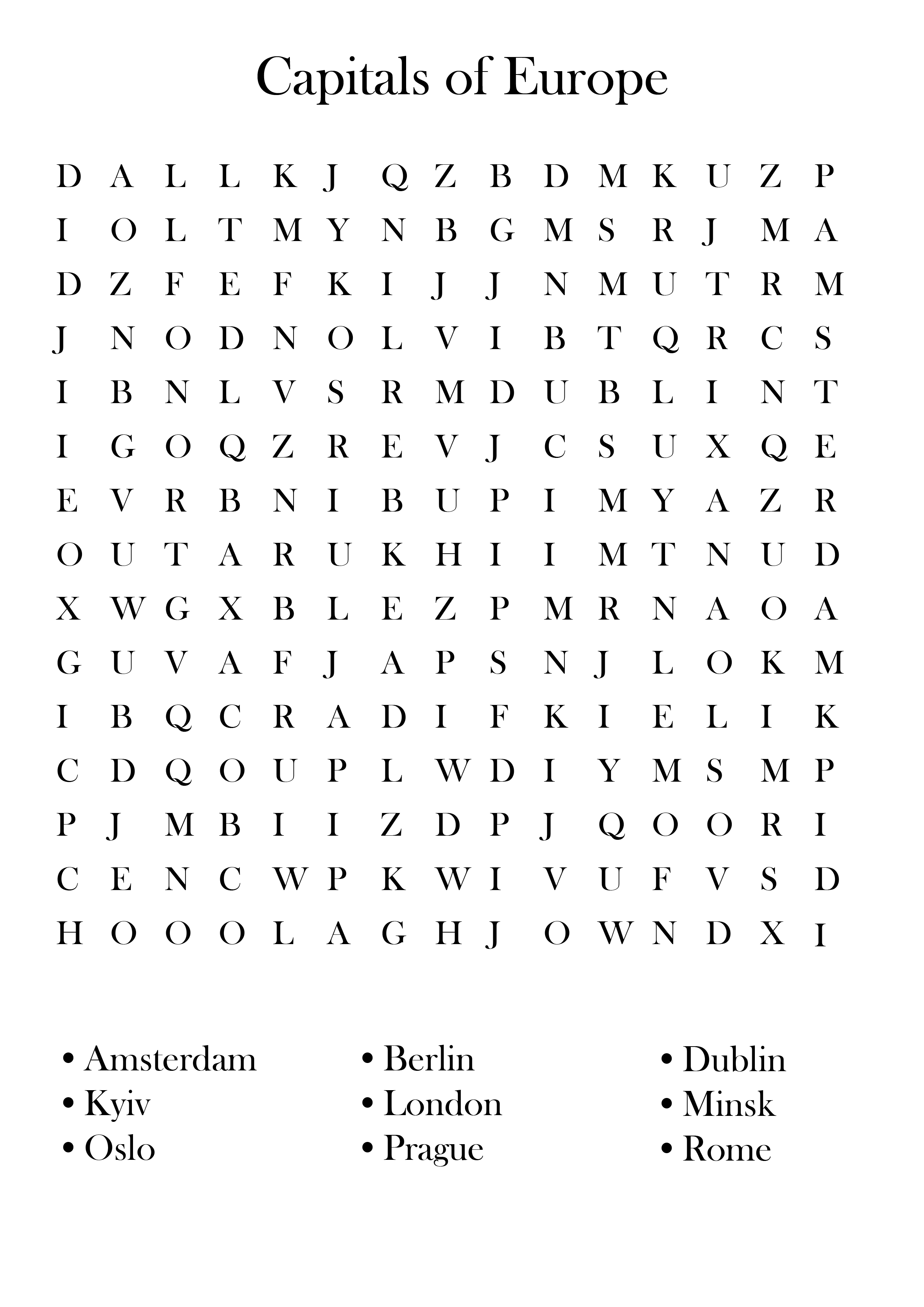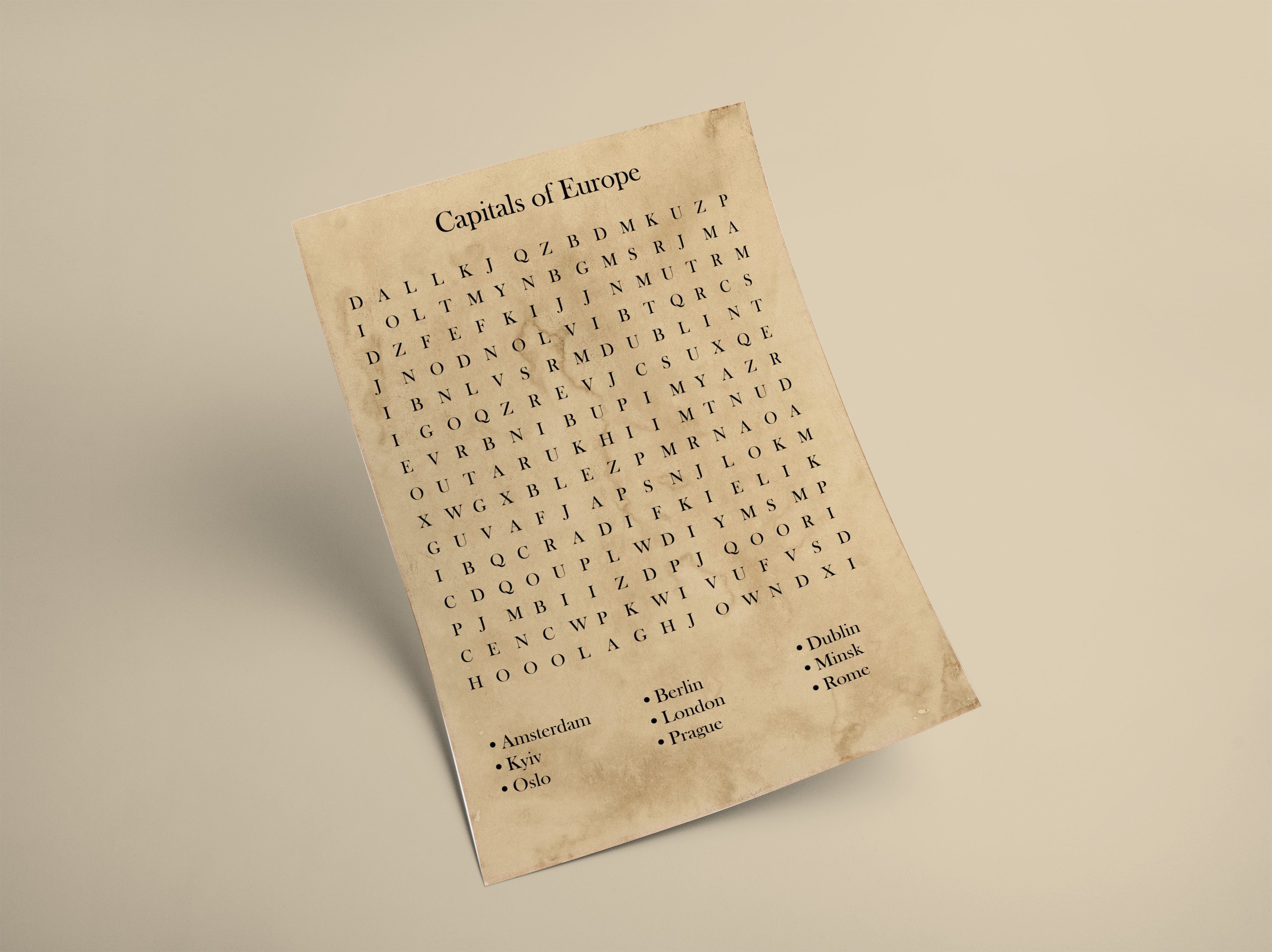
Because our project was made for the exhibition, and it could only support two people at once, we didn't want too many puzzles, so we tried to limit down as much as we could, whilst still having an exciting stall. Eventually we settled to having four puzzles. Within the first puzzle, the players would have to communicate with each other trying to fit together different glass shapes to reveal a message that would lead them to the next puzzle, which would be a map. The map then had eight locations on it, which corrisponded to animals our villain had hunted. The players then have to use clues given about each animal to reveal a string of letters which will then lead them to what sheet of word searches they have to use to reveal the next clue. Though this next clue is set within the bounds of a word search, fortunatley the players don't actually have to solve it, instead, they have to use coordinates given by the other player to pinpoint certain letters that will reveal a string of letters. These random letters then have to be translated using a stamp-like device made by our CAD designer. Each letter has a specific 2-6 orientation, similar to brail but we have mixed up the cypher so it's not that easy to solve. With the code translated, this will then lead the players to an Instagram account which reveals the location of our villain.


Although I did help come up with a lot of the puzzles, my design expertise was largely put into making word searches for the second puzzle. I tried to keep a largely standard design, as I knew most word searches wouldn't be too dramatic different, but I did alter the font choice from a regular san serif to something that suited our villain a little more. We plan to print out these word searches onto parchment, as seen on the mockup below, so I saved this as a PNG. By the time the exhibition arrives, I will have made three of these to use in the exhibition, however only one will have the answer to lead to the next clue.
